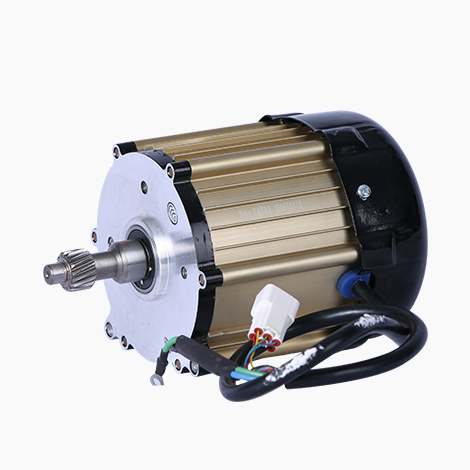E-mail:
Wuxi Sine Power Technology Co., Ltd.
Add:No. 8, Xiang'an Road, zone B, Dacheng Industrial Park, anzhen street, Xishan District, Wuxi City
Telephone:+86
|
|
Briefly describe the working principle of the motorIssuing time:2019-12-17 15:09 Briefly describe the working principle of the motor The motor of the central motor is a device that converts electrical energy into mechanical energy. It uses the energized coil (that is, the stator winding) to generate the rotating magnetic field and act on the squirrel cage type closed aluminum frame of the rotor to form the magnetoelectric rotating torque. Motors are divided into DC motors and AC motors according to the power supply. Most of the motors in the power system are AC motors, which can be synchronous motors or asynchronous motors (the speed of the stator magnetic field of the motor does not keep synchronous with the speed of the rotor). The motor of 10 inch electric motor manufacturer is mainly composed of stator and rotor. The direction of force movement of the energized wire in the magnetic field is related to the current direction and magnetic induction line (magnetic field direction) direction. The working principle of the motor is that the magnetic field acts on the current force to make the motor rotate. Basic structure 1、 The structure of three-phase asynchronous motor consists of stator, rotor and other accessories. (1) Stator (stationary part) 1. Stator core Function: part of the magnetic circuit of the motor, on which the stator winding is placed. Structure: The stator core is generally made of 0.35-0.5mm thick silicon steel sheet with insulating layer on the surface by punching and laminating. The inner circle of the core is punched with evenly distributed grooves to embed the stator winding. The stator core groove types are as follows: Semi closed slot: the motor has high efficiency and power factor, but it is difficult to embed wires and insulate windings. It is generally used in small low-voltage motors. Semi open slot: It can be embedded with shaped winding, generally used for large and medium-sized low-voltage motors. The so-called formed winding means that the winding can be put into the slot after insulation treatment in advance. Open type slot: It is used to embed shaped windings, and the insulation method is convenient. It is mainly used in high-voltage motors. 2. Stator winding Function: It is the circuit part of the motor, which is connected with three-phase alternating current to generate a rotating magnetic field. Structure: It is composed of three identical windings arranged at 120 ° electrical angle and in a symmetrical array. Each coil of these windings is embedded in each slot of the stator according to certain rules. The main insulation items of the stator winding are as follows: (to ensure reliable insulation between the conductive parts of the winding and the iron core and between the windings themselves). (1) Insulation to ground: insulation between the whole stator winding and the stator core. (2) Phase to phase insulation: insulation between stator windings of each phase. (3) Turn to turn insulation: insulation between turns of each phase stator winding. Wiring in motor junction box: There is a terminal block in the motor terminal box. The six wire ends of the three-phase winding are arranged in two rows. The numbers of the three terminal piles in the upper row from left to right are 1 (U1), 2 (V1), 3 (W1), and the numbers of the three terminal piles in the lower row from left to right are 6 (W2), 4 (U2), 5 (V2) Connect the three-phase winding into star connection or delta connection. All manufacturing and maintenance shall be arranged according to this serial number. 3. Stand Function: fix the stator core and front and rear end covers to support the rotor, and play the role of protection, heat dissipation, etc. Structure: The frame is usually cast iron, the frame of large asynchronous motor is generally welded with steel plate, and the frame of micro motor is made of cast aluminum. There are heat dissipation ribs outside the frame of the enclosed motor to increase the heat dissipation area, and the end covers at both ends of the frame of the protective motor are provided with ventilation holes, so that the air inside and outside the motor can flow directly to facilitate heat dissipation.
|



